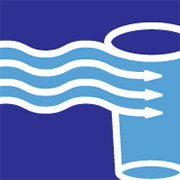In February, the California Water Association (CWA) joined other utility associations in submitting written recommendations to the State Water Resources Control Board (SWRCB) on the proposed Multi-Regional National Pollutant Discharge Elimination System (NPDES) Permit (Multi-Regional Permit) to manage discharges from community water systems. Authorized by the Clean Water Act, the NPDES Permit Program controls water pollution by regulating point sources, such as pipes, holding tanks or man-made ditches, that discharge pollutants into U.S. waters.
CWA’s letter to the SWRCB stated that although CWA members support “a workable regulatory process that would provide clarity and standardization of compliance practices across all public water systems,” concerns exist “about the inability of any community water system to comply with what is being proposed by the San Francisco Bay Regional Water Quality Control Board (SFBRWQCB) and the SWRCB.” In the recommendations, CWA noted that a Multi-Regional Permit “would have a dramatic and deleterious impact on all of California’s water utilities and agencies.” Furthermore, the “complexity of the proposed monitoring and reporting requirements far exceeds the operational capacity of CWA’s member companies and their public agency counterparts…and compliance with the numeric limits being considered is neither technically practical nor economically feasible.”
CWA asked the SWRCB to consider the following key issues as the process moves forward to ensure a protective and practical permit is developed that can reasonably be complied with by all permitees:
Process and Stakeholder Outreach: Since the permit development process has not engaged all stakeholders in a meaningful way and workshops have not been adequately advertised, significant confusion exists among community water systems about the proposed Multi-Regional Permit. To gather meaningful input, CWA encouraged the SWRCB to enhance outreach efforts to reach all affected stakeholders.
De Minimis (Minor) Discharges: Potable water suppliers in California are closely regulated by the California Department of Public Health to ensure safe drinking water. Since potable drinking water discharges are regulated by the Safe Drinking Water Act and have been recognized as a low threat throughout California and the nation, CWA said potable water discharges should be regulated taking into account the nature and reason for the discharges.
CWA urged the SWRCB and regional water quality control boards (RWQCBs) to work closely with stakeholders in taking a risk-management approach that clearly defines the various discharge categories and their associated requirements based on the volume and risk potential of the discharges designated under the federal Clean Water Act and California Code of Regulations as de minimis. CWA also called for setting a volume threshold for monitoring and reporting based on the fact that many discharges are so small they are unlikely to have unwarranted environmental impacts.
MS4 Permit Coverage
Some RWQCBs use Municipal Separate Storm Sewer System (MS4) permits to regulate potable drinking water discharges to surface waters. MS4 permits provide flexibility for municipalities by allowing them to use appropriate pollutant control measures that are more site-specific and avoid unwanted one-size-fits-all types of requirements.
To the extent water suppliers are covered by an MS4 permit (or other applicable permits), CWA contended they “should not be required to obtain separate coverage under a multi-regional or statewide permit for potable water discharges. At a minimum, a multi-regional or statewide permit for potable water discharges should recognize alternative regulatory mechanisms, such as drinking water purveyor coverage under MS4 permits.”
Planned Versus Unplanned Events
The proposed Multi-Regional Permit will effectively treat planned (i.e., reservoir cleaning projects) and unplanned (i.e., emergency main breaks) events in the same regulatory fashion by requiring similar monitoring and reporting. In reality, they are markedly different types of discharges. Planned discharges provide staff with adequate time to design an action plan for regulating and altering the discharges, while unplanned discharges require immediate responses to address public health and safety.
CWA suggested that requirements related to unplanned discharges should not include numeric limits or action levels, rather they should include prescriptive best management practices (BMPs) designed to reduce adverse impacts to the maximum extent practicable.
Numeric Limits and Action Levels
The SWRCB and the SFBRWQCB are proposing numeric limits in their discharge permits, while the Central Valley Regional Water Quality Control Board has instead opted for narrative BMP-based requirements. CWA urged the SWRCB to explain this inconsistency to stakeholders to dispel the significant confusion about why community water systems, which are very similar in their operational practices, potentially may be regulated in significantly different ways based solely on the region in which they operate. CWA stated that “if numerical limits are indeed feasible, it is critical that these limits be implemented in a manner that takes into account the ability to obtain reliable and accurate field measurements.”
CWA also noted that “a scientifically or empirically derived minimum level first must be established before numerical limits are determined to be feasible.” And since a numeric action level may be exceeded with unplanned discharges, CWA proposed specifying prescriptive BMPs that are technically achievable and not cost prohibitive.
Finally, since the pH (acidity or alkalinity) level in drinking water is routinely monitored and varies slightly over time, CWA explained there is little value in asking a water utility to conduct pH sampling and monitoring for every discharge. Since the pH level of the discharged water already is known and documented, the data can be made readily available to regulatory agencies without taking additional samples and measurements. CWA proposed reviewing and analyzing pH levels only in situations where discharges are known to cause harm to the receiving water uses.
Receiving Water Monitoring
The proposed Multi-Regional Permit indicates receiving waters should be monitored whenever numeric limits for chlorine, pH and/or turbidity (clarity or murkiness) action levels are exceeded. Since larger utilities often discharge to storm conveyance systems where water typically travels for miles before entering a receiving water, it is nearly impossible to determine when and where the planned or unplanned discharge will actually enter a receiving water.
In managing potable water discharges, CWA suggested that public water systems be required to conduct a visual survey of the receiving water for erosion, turbidity plumes and fish kills when the volume threshold of the discharge exceeds 100,000 gallons and when the discharge is within 300 feet of the receiving water. This approach would protect the environment and be less burdensome than having to monitor receiving waters whenever numeric limits or benchmarks are exceeded.
CWA’s letter concluded, “As dedicated stewards of public health and the environment, CWA’s members have been using BMPs and are supportive of ensuring the uniform application of these BMPs to minimize the impact of the industry’s operational needs and requirements and the costs imposed on drinking water customers.”
CWA will continue to monitor and provide input on the Multi-Regional Permit process.





